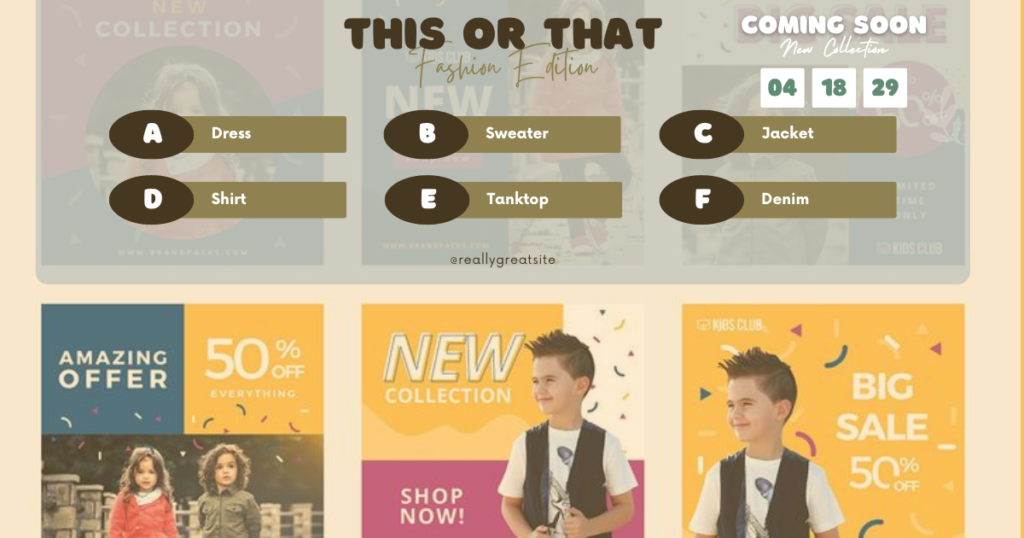Table of Contents
ToggleServes Everyone from Small Children to Adults
Creating products or services that “serves everyone from small children to adults” is no small feat. It requires an understanding of diverse needs and preferences, which can vary significantly across different age groups. Whether it’s a family-friendly amusement park, a versatile educational tool, or a multi-generational service, achieving this balance involves thoughtful design, inclusive features, and adaptability. In this post, we’ll explore how to ensure your offerings can cater to all ages effectively.
Universal Appeal: How Products and Services Cater to All Ages
A product or service that “serves everyone from small children to adults” must have universal appeal. This involves designing with flexibility and inclusivity in mind. For instance, interactive toys that engage children can also be educational, providing value for parents who seek developmental benefits. Similarly, a family restaurant with a menu that includes both child-friendly and gourmet options ensures that it remains appealing to diners of all ages. Universal appeal often hinges on a combination of functionality, aesthetics, and adaptability.
All-Inclusive Solutions: What Makes a Product or Service Suitable for Everyone?
To create an all-inclusive solution that “serves everyone from small children to adults,” it’s crucial to address various needs and preferences. Features such as adjustable settings, varying difficulty levels, and inclusive design can help. For example, a tech gadget designed for all ages might include easy-to-use interfaces for children, but also advanced features for adults. Accessibility, safety, and versatility are key elements that make a product or service suitable for a broad audience.
Designing for Diversity: How to Serve All Ages in Your Business
Designing for diversity ensures that your business “serves everyone from small children to adults.” This approach involves understanding and incorporating the needs of different age groups into your business model. For instance, educational institutions offering programs for both young children and adults need to tailor their curriculum and teaching methods accordingly. Businesses should also consider diverse marketing strategies that appeal to various age groups, ensuring inclusivity in both product offerings and communication.
Bridging generations involves finding common ground that resonates with both children and adults. When creating something that “serves everyone from small children to adults,” focus on universal themes and experiences. Family-oriented activities or products, like board games with simplified rules for kids and strategic layers for adults, can appeal across age groups. The key is to create experiences or products that are engaging and enjoyable for all, fostering intergenerational interaction and satisfaction.
Bridging Generations: The Secret to Catering to Both Kids and Adults
One Size Fits All? How to Create Products and Services for All Ages
The idea of “one size fits all” can be challenging when “serves everyone from small children to adults.” However, the goal is to design products or services that offer flexibility and adaptability. For example, a versatile piece of furniture might have adjustable components to suit various ages and needs, from a toddler’s low seat to an adult’s higher setting. Effective solutions often involve modular designs or customizable features that accommodate a wide range of users.
Family-Friendly Features: What to Consider When Serving All Age Groups
When creating something that “serves everyone from small children to adults,” incorporating family-friendly features is essential. These might include safety measures like rounded edges on furniture, easy-to-clean materials, or features that promote interaction between family members. Additionally, providing options for different dietary preferences in a family restaurant or varying educational content in a learning app can make your offering more inclusive and appealing to all age groups.
Age-Spanning Services: How to Ensure Your Offerings Meet Everyone’s Needs
Ensuring that your service “serves everyone from small children to adults” involves a thorough understanding of the diverse needs of different age groups. This might include offering various service tiers or customization options that cater to specific age-related requirements. For instance, a fitness center could provide specialized programs for children, adults, and seniors, ensuring that all age groups have access to appropriate and engaging activities.
Creating Multi-Generational Appeal: Strategies for Serving All Ages
Creating multi-generational appeal means designing with the aim of satisfying diverse age groups simultaneously. When your goal is to “serve everyone from small children to adults,” consider features that foster interaction and inclusivity. Multi-generational appeal can be achieved through thoughtful design, such as interactive spaces where different age groups can enjoy activities together or versatile products that offer varying levels of functionality to meet the needs of all users.
FAQs
- What are key considerations when designing products for all ages? When designing products to “serve everyone from small children to adults,” consider safety, usability, and flexibility. Features should be adjustable or customizable to meet the needs of different age groups, and the design should be inclusive and accessible.
- How can businesses effectively market to all age groups? Effective marketing to all age groups involves understanding the interests and preferences of each demographic. Tailor your messaging and promotional strategies to resonate with both younger and older audiences, and use diverse channels to reach them.
- What are some examples of products that successfully serve all ages? Products like multi-functional furniture, interactive educational tools, and family-friendly entertainment options often successfully “serve everyone from small children to adults.” These products offer features or settings that cater to various age groups and needs.
- How can services be adapted to cater to different generations? Services can be adapted by offering different tiers or options that address specific age-related needs. For example, a community center might offer programs for children, adults, and seniors, ensuring that each group has relevant and engaging activities.
- Why is it important to consider multi-generational appeal in product design? Considering multi-generational appeal ensures that your product or service can reach a broader audience, increasing its marketability and customer satisfaction. It also promotes family interaction and inclusivity, enhancing the overall value and experience.


